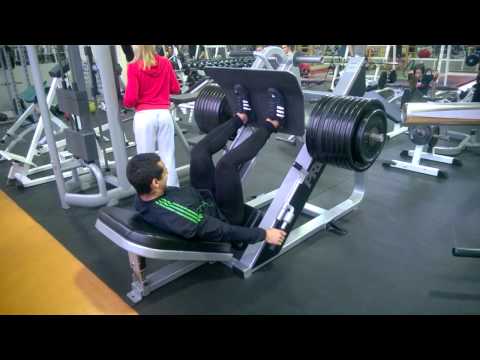[This is a series of posts I wrote for novice lifters I coach, but the information here applies to everyone. If you want to start at the beginning, go to Part 1: Recovering From Workouts and then read Part 2: Why Resting Between Sets Is Important -Dave]
I’ll start here by saying that full-body movements are the best things we can do as our major exercises. They are the best because they involve the greatest number of muscle groups, and that means we can get stronger with fewer exercises. They also mimic the ways we are likely to need our strength in the real world. So, we squat instead of leg pressing, as the former involves the legs, hips, back, and even arms, while the latter is mosly just the thighs and (to a lesser extent) calves.

Nobody cares how much you leg press, bro. Literally *nobody*. Not even you. Admit it.
Let’s understand up front that there are a lot of reasons to do exercises that are less optimal. Folks with physical limitations that prevent them from squatting, such as a hip injury or disability for example, might benefit from a leg press machine that allows them to get some lower body work without putting themselves at risk of injury. So there is nothing wrong with exercises that isolate muscle groups a bit. Those have their place (and we’ll talk about that, below). But given a choice, we’ll always opt for full body movements.
Full body movements are the core then. For us as lifters, our core of movements are: squats, deadlifts, bench presses, overhead presses, and various exercises that help us build strength towards a chin-up or pull-up (these latter include ring rows, jumping chin-ups, and even biceps curls).
Once we have done full-body exercises that allow us to push and pull in a variety of planes of movement, we turn our eyes towards assistance exercises. These are more isolated movements (generally speaking, although planks are a full-body assistance exercise for sure). Another term I use interchangeably with “assistance exercises” is “accessory work.” That’s because these exercises are not the main focus of our sessions. They are intended to complement the “big lifts” of each training session.

Faceless Cartoon Guy didn’t get these muscles from curls alone
The specific goal of these exercises in each of your program is to increase strength (and muscle mass) in a specific set of muscles that are either weak in you specifically, or in the general population of folks new to lifting. As an example, we do barbell rows to strengthen muscles in our mid and upper backs (the latisssimus dorsi, or “lats,” the rhomboids in between the shoulder blades, etc.). This is because most people have weak rhomboids and non-existent lat development, but both of those muscles are essential to holding our backs in a good, tight, neutral position for squats, deadlifts, bench press, and overhead press.
For me as a lifter, I have a very strong posterior chain overall, but in the past I found that my hamstrings were a weak spot. Thus, I did exercises to strengthen them, and bring them into line with the strength in my back and glutes; this had a direct effect on improving my deadlift.
So each of the assistance exercises I have you doing are tailored to specific areas of weakness:
– Planks and plank variations: core strength (everyone’s core is weaker than they think it is)
– Curls (dumbbell, kettlebell, or barbell): Biceps and forearm strength
– Farmer’s Walks: grip strength, shoulder strength, mid-back strength
…and so on. Let me know if you want to understand the reasoning behind a specific exercise, and I’ll provide it!

Pingback: The Basics, Part 4 – Why we do certain set or rep schemes | VintageStrong